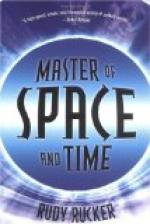But these induced currents could only be detected at a distance by the use of enormous coils. To receive at a half-mile a coil of eight hundred feet radius would have been necessary, and this was obviously impossible for use on shipboard. So these experiments also developed no practical improvement in the existing means of communication. But Professor Trowbridge had demonstrated new possibilities, and had set men thinking along new lines. He was the pioneer who pointed the way to a great invention, though he himself failed to attain it.
Bell followed up Trowbridge’s suggestions of using the water as a medium of communication, and in a series of experiments conducted on the Potomac River established communication between moving ships.
Professor Dolbear also turned from telephone experimentation to the search for the wireless. He grounded his wires and sent high currents into the earth, but improved his system and took another step toward the final achievement by adding a large induction coil to his sending equipment. He suggested that the spoken word might be sent as well as dots and dashes, and so sought the wireless telephone as well as the wireless telegraph. Like his predecessors, his experiments were successful only at short distances.
The next application of the induction telegraph was to establish communication with moving trains. Several experimenters had suggested it, but it remained for Thomas A. Edison to actually accomplish it. He set up a plate of tin-foil on the engine or cars, opposite the telegraph wires. Currents could be induced across the gap, no matter what the speed of the train, and, traveling along the wires to the station, communication was thus established. Had Edison continued his investigation further, instead of turning to other pursuits, he might have achieved the means of communicating through the air at considerable distances.
These experiments by Americans in the early ’eighties seemed to promise that America was to produce the wireless telegraph, as it had produced the telegraph and the telephone. But the greatest activity now shifted to Europe and the American men of science failed to push their researches to a successful conclusion. Sir W.H. Preece, an Englishman, brought himself to public notice by establishing communication with the Isle of Wight by Morse’s method. Messages were sent and received during a period when the cable to the island was out of commission, and thus telegraphing without wires was put to practical use.
Preece carried his experiments much further. In 1885 he laid out two great squares of insulated wire, a quarter of a mile to the side, and at a distance of a quarter of a mile from each other. Telephonic communication was established between them, and thus he had attained wireless telephony by induction. In 1887, another Englishman, A.W. Heaviside, laid circuits over two miles long on the surface and other circuits in the galleries of a coal-mine three




